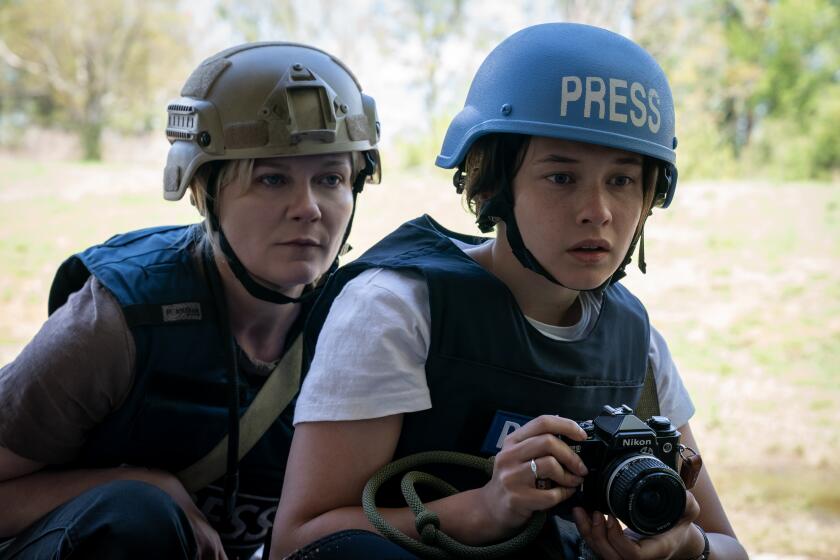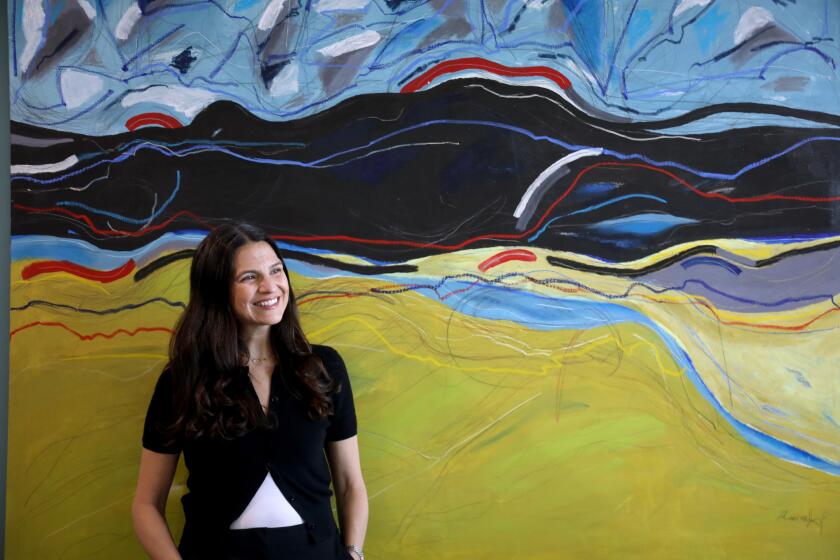Fade out for visual effects
For 11 years, Nathan McGuinness ran a successful visual effects house in California. His Santa Monica company, Asylum Visual Effects, created the World War II submarine battle scene in “The Curious Case of Benjamin Button,” the flying dragon straddled by Nicolas Cage in “The Sorcerer’s Apprentice” and the bionic anatomy of Sam Worthington’s character in “Terminator Salvation.”
But the impressive credits, along with an Academy Award nomination, couldn’t keep his business afloat. Unable to cover even the rent, McGuinness closed shop late last year, laying off nearly 100 workers.
“We were a good company, we were efficient, we did our jobs well, but we just couldn’t compete with the overseas markets,” the Australian native said.
California’s visual effects industry, which pioneered the use of computers to create and manipulate images in live-action films, is under siege.
Half a dozen visual effects houses have shut their doors in the last three years, including three in Los Angeles County, pushing hundreds of visual effects artists out of high-tech and skilled jobs that pay $75,000 to $150,000 a year. Los Angeles County, where the visual effects industry has been concentrated, has seen more than 1,000 jobs in the visual effects and post-production sector vanish over the last decade, according to state employment data.
Visual effects in filmmaking used to be created by using physical props, animatronics and models -- think of the spaceship gliding overhead in the opening credits of “Star Wars” -- but today they frequently are produced on computers. The technology represents the cutting edge of filmmaking, involving teams of digital artists trained in 3-D modeling, computer animation and computer graphics.
Even though demand for visual effects in movies is greater than ever thanks to spectacles such as “Avatar” and “Tron: Legacy,” several California visual effects companies are clawing for survival. The reason is a familiar one to American industry: mounting competition from foreign rivals that can do the work cheaper.
By taking advantage of tax credits in Vancouver, Canada, and London -- where visual effects work for “Iron Man 2” and “Inception” was done -- or employing low-cost labor in China, Singapore and India, filmmakers are able to shave tens of millions of dollars off a movie’s production budget.
Not long ago the visual effects industry was dominated by a few California companies with their own proprietary techniques and tools, along with the artists trained to use them. Now, thanks to advances in technology, the adoption of standardized techniques and readily available digital workforces, the industry has fanned out around the globe.
For filmmakers under orders to hold movie budgets in check, availing themselves of tax credits and low-cost labor is simply smart business. Visual effects eat up as much as 30% to 40% of a movie’s budget, and more than $50 million on major studio films.
“With those kinds of numbers, these film tax rebates, while always of value, are now impossible to ignore,” said Chris deFaria, executive vice president of digital production, animation and visual effects for Warner Bros., which plans to shoot several movies in Britain including “Jack the Giant Killer” and “Dark Shadows.”
Leading California visual effects companies such as Digital Domain, Rhythm & Hues and George Lucas’ Industrial Light & Magic have adapted by opening studios in Vancouver, Singapore, Mumbai and other foreign locales, creating digital pipelines in which data files can be readily transferred around the world.
Technicolor’s international visual effects house, MPC, has offices in London and Vancouver, as well as Santa Monica.
At the same time, Indian corporations Tata, Reliance and Prime Focus have planted roots in Los Angeles, recruiting visual effects artists to compete for business.
The march toward globalization, however, has had devastating effects upon small to mid-size California companies that don’t have the resources to build a global network.
“It’s really a blow to the state to lose these jobs,” said Jeff Barnes, co-owner of CafeFX, the Santa Maria, Calif.-based visual effects shop that closed in December after 17 years in business. The company, which had an office in Santa Monica, employed as many as 175 people a year ago.
“Something has got to be done or it’s going to be like what happened to the aerospace industry in California,” Barnes said.
The state’s film tax credit program has brought little relief to California’s beleaguered visual effects industry because it excludes big-budget features, the principal employer of visual effects. And the state is seeing worked siphoned off to Vancouver, where a film tax credit program targets visual effects houses.
“We’re very aware of the problems facing California visual effects companies, but currently the program is limited due to available funding,” said Amy Lemisch, director of the California Film Commission.
Most visual effects companies operate on narrow profit margins of 5% or less. So the loss of a single contract can be enough to push some companies over the edge.
CafeFX thrived for many years, landing big jobs on “Shutter Island,” “Pan’s Labyrinth” and “Alice in Wonderland.” But business began to dry up when the recession hit and clients began scrambling for tax breaks and rebates offered elsewhere.
“We would bid stuff at break-even and they would say, ‘We can do the work for 20% to 40% less going offshore to Canada, the U.K. or Australia,’ ” Barnes said.
For example, CafeFX bid for work on “Devil,” produced by M. Night Shyamalan, but the movie and much of the visual effects work ended up being done in Ontario, Canada. “We just couldn’t make the numbers work,” Barnes said.
Barnes also had hoped to pick up subcontract work on Walt Disney’s recently released “Tron” film from Venice-based Digital Domain. But Digital Domain farmed out extra work to studios in Vancouver, where it has an office, as well as to companies in India and Mexico.
The closing of Illusion Arts, one of Hollywood’s most established visual effects houses, in 2009 sent shockwaves through the local industry. Bill Taylor and his partner, Syd Dutton, had operated the company, which employed nearly 20 people, for 26 years, specializing in creating synthetic environments such as skies and lakes on scores of films, including “Bruce Almighty” and “Night at the Museum: Battle of the Smithsonian.”
“We were just losing bid after bid,” said Taylor, who now works as a consultant. “All the work was going to Vancouver, London, Bulgaria and India.”
California-trained visual effects artists are still in demand, but often now have to travel overseas for work.
McGuinness of Asylum is relocating to Singapore to head a visual effects operation for London-based company Double Negative Visual Effects.
Former visual effects supervisor Ben Grossmann traveled to Britain to work on Martin Scorsese’s first 3-D film, “Hugo Cabret,” after being laid off at Syndicate, the Santa Monica-based division of CafeFX. He now supervises a crew of visual effects artists in eight locations across five countries with Pixomondo, an international company with offices in L.A. and Germany.
“We have the best artists here in the world,” Grossmann said, “but they are pretty much the most expensive artists in the world.”
--
More to Read
The biggest entertainment stories
Get our big stories about Hollywood, film, television, music, arts, culture and more right in your inbox as soon as they publish.
You may occasionally receive promotional content from the Los Angeles Times.







